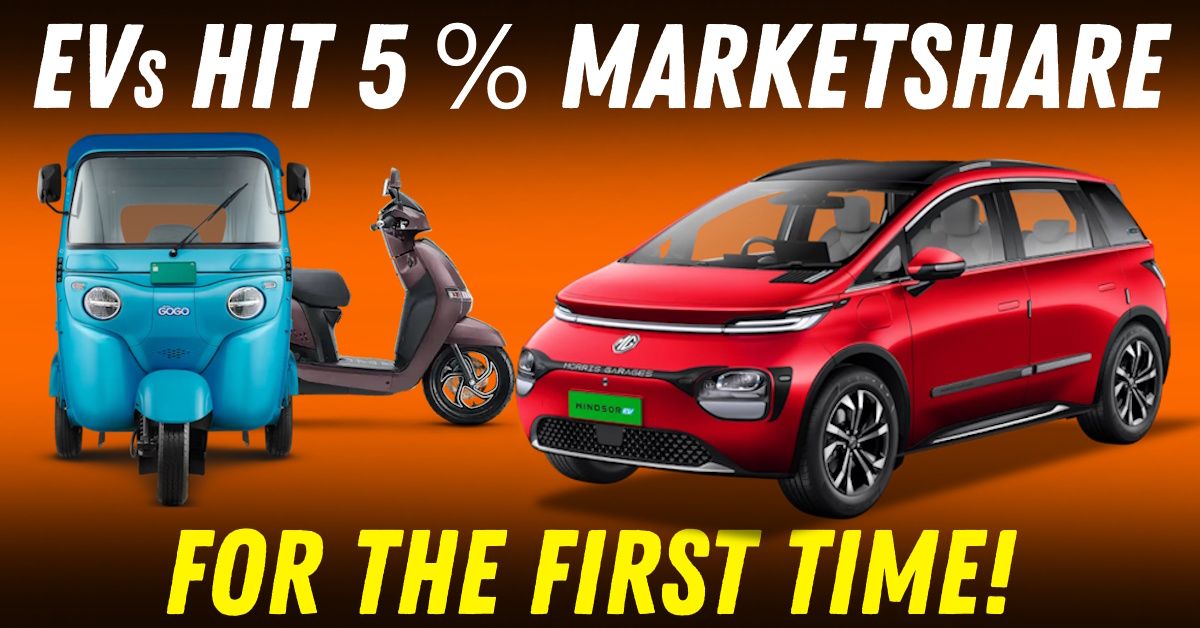Electric Vehicle Sales in India Cross 5% for the First Time


Electric vehicles (EVs) have hit an important milestone in India. In July 2025, EVs made up more than 5% of all vehicle sales for the first time ever. This is a clear sign that more Indian buyers are now willing to choose electric vehicles over petrol or diesel options.
According to data from the government’s Vahan portal, India recorded 179,039 EV registrations in July alone. That’s a 55% increase compared to the same month in 2023. It’s no longer just a small trend—EVs are starting to become part of everyday transport choices.
Most of this growth is coming from electric scooters and motorcycles. This category saw a huge 96% rise in sales over the past year and now accounts for 7.4% of total two-wheeler sales. Buyers are now more confident because newer EV models offer good range, fast charging, and lower running costs.
In busy cities, electric scooters have become very practical for daily travel. Many can now go over 100 km on a single charge, which is enough for most people’s needs. With better charging support in urban areas, more people are making the switch.
The three-wheeler segment is also seeing major change. Today, 57.6% of all electric rickshaws and passenger carriers sold are electric. These vehicles are often used by drivers and small business owners, who care more about saving money on fuel. EVs give them a big cost advantage, even if they cost more upfront.
Electric cars are still growing slowly, but they’re showing steady progress. EV cars now hold 4.6% market share in July 2025, and that number is rising. Many car makers like Tata Motors and MG now offer electric models that are more affordable than before. Some buyers are choosing EVs as second cars or for daily city use.
One big reason EVs are growing is that charging infrastructure is also growing fast. As of July 2025, India had 25,202 public charging stations. Karnataka leads with over 5,700 stations, followed by Maharashtra and Uttar Pradesh. As charging gets easier, more people feel confident about buying an EV.
The Electric Mobility Promotion Scheme by the central government is also playing a key role. This scheme gives financial support for EV purchases and has been extended to September 2025. Many states offer additional benefits like tax cuts or fee waivers.
On the manufacturing side, companies like Ola Electric, TVS, and Bajaj are building more EVs in India. This reduces imports and keeps prices under control. Better battery technology has also improved range and charging times.
Experts believe EVs could reach 8 to 10% of total vehicle sales by the end of 2025. But there’s still more to do. India needs more charging stations, better EV service centres, and a system for recycling old batteries.
Still, the July milestone is a big achievement. It shows that EVs in India are no longer just for early adopters. More and more people are choosing them because they make sense - cheaper to run, easy to maintain, and better for the environment.